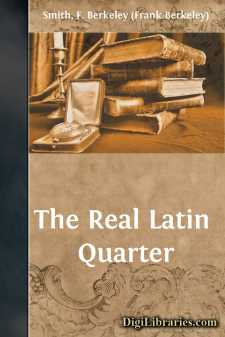Non-Classifiable
- Non-Classifiable 1768
Non-Classifiable Books
Sort by:
At the end of the preceding book a pause was necessary. With this begins the long chain of my misfortunes deduced from their origin. Having lived in the two most splendid houses in Paris, I had, notwithstanding my candor and modesty, made some acquaintance. Among others at Dupin's, that of the young hereditary prince of Saxe-Gotha, and of the Baron de Thun, his governor; at the house of M. de la...
more...
PREFACE. In drawing up this little “Handbook of Embroidery” we do not pretend to give such complete technical directions as would enable a beginner in this beautiful art to teach herself; because learning without practical lessons must be incomplete, and can only lead to disappointment. We have sought, therefore, only to respond to the inquiries we are constantly receiving, and to supply useful...
more...
by:
William Sangster
CHAPTER I. INTRODUCTORY. Can it be possibly believed, by the present eminently practical generation, that a busy people like the English, whose diversified occupations so continually expose them to the chances and changes of a proverbially fickle sky, had ever been ignorant of the blessings bestowed on them by that dearest and truest friend in need and in deed, the UMBRELLA? Can you, gentle reader, for...
more...
by:
Anonymous
Handbook of Wool Knitting and Crochet A Lesson in KnittingFigure 1. Casting on with Two NeedlesThe first thing to be done in knitting is to cast on or, as it is sometimes called, to "set up the foundation." (). There are several methods for this, the following being that preferred and generally used by the writer: Leave a spare end of thread, sufficient for the number of stitches you wish to...
more...
by:
George Thomas
THE TREATY, &c. THE Deputies of the Six Nations having, at their last Visit, agreed to release their Claim to all the Land on both Sides of the River Susquehanna, as far South as this Province extends, and to the Northward to those called the Endless Mountains or Kittochtinny Hills; in Consideration whereof, they then received a large Quantity of valuable Indian Goods for the Lands situate on the...
more...
he idea of a machine-made watch with interchangeable parts had been in the minds of many men for a long time. Several attempts had been made to translate this conception into a reality. Success crowned the efforts of those working near Boston, Massachusetts, in the 1850’s. The work done there formed the basis on which American watch making grew to such a point that by the 1870’s watches of domestic...
more...
A Start in Life. I have entitled this little book "A Start in Life," because it conveys information which would enable any person possessing a small capital, with some industry, patience, and steady habits, to make a start in life which, humanly speaking, could not fail of success. The old countries of Europe contain a superabundant population; every branch of professional and commercial life...
more...
by:
P. L. Simmonds
INTRODUCTORY. The want of a practical work treating of the cultivation and manufacture of the chief Agricultural Productions of the Tropics and Foreign Countries, has long been felt, for not even separate essays are to be met with on very many of the important subjects treated of in this volume. The requirements of several friends proceeding to settle in the Colonies, and wishing to devote themselves...
more...
“Cocher, drive to the rue Falguière”—this in my best restaurant French. The man with the varnished hat shrugged his shoulders, and raised his eyebrows in doubt. He evidently had never heard of the rue Falguière. “Yes, rue Falguière, the old rue des Fourneaux,” I continued. Cabby’s face broke out into a smile. “Ah, oui, oui, le Quartier Latin.” And it was at the end of this crooked...
more...
by:
Walter Hubbell
CHAPTER I. THE HOME OF ESTHER COX. Amherst, Nova Scotia, is a beautiful little village on the famous Bay of Fundy; has a population of about three thousand souls, and contains four churches, an academy, a music hall, a large iron foundry, a large shoe factory, and more stores of various kinds than any village of its size in the Province. The private residences of the more wealthy inhabitants are very...
more...











